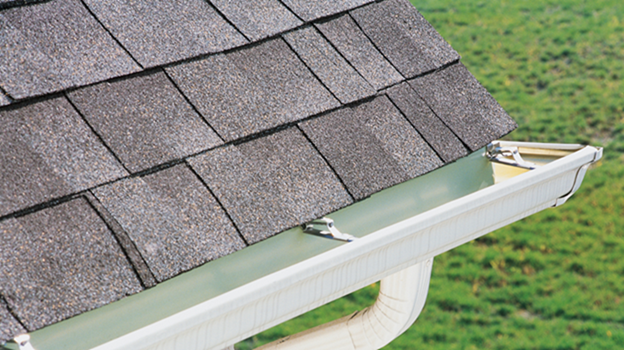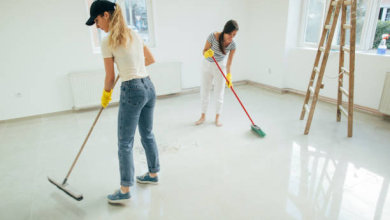
Material Choices for Drip Edge: Pros Cons & Lifespan
Drip edge is one of those roof details that quietly determines how well your eaves resist water, ice, and wind. The profile matters (D, F, L, hemmed, extended lip), but the metal you choose shapes everything from lifespan and maintenance to appearance and compatibility with gutters and guards. Here’s a practical comparison of the three most common drip edge materials—aluminum, galvanized steel, and copper—so you can match performance and budget to your home’s conditions.
Aluminum Drip Edge
What it is: Lightweight, corrosion-resistant metal available in many factory colors and thicknesses (commonly .019″–.032″). Often paired with aluminum gutters.
Pros
- Corrosion resistance: Aluminum doesn’t rust, making it reliable in damp climates and near the coast (though direct salt spray still demands marine-grade coatings).
- Color options: Baked-on finishes blend with fascia/gutters for a clean, consistent line without painting.
- Ease of install: Cuts and bends easily, reducing labor time and creating crisp miters at corners.
- Thermal movement tolerance: Expands and contracts without stressing fasteners as much as steel.
Cons
- Denting and “oil-canning”: Thinner stock can ripple or dent during installation or under wind pressure. Heavier gauges reduce this.
- Galvanic caution: Contact with copper (from roof flashings or treated runoff) can cause galvanic corrosion if not isolated.
- Heat softness: Prolonged high heat can increase waviness in long, unsupported runs if the gauge is too light.
Lifespan & best use
- Typical lifespan: 20–30+ years, longer with heavier gauge and quality coatings.
- Best for: Standard asphalt shingle roofs, neighborhoods prioritizing color-matched trim, and projects seeking strong value with low upkeep.
Galvanized Steel Drip Edge
What it is: Carbon steel coated with zinc (galvanization) to slow corrosion. Often primed or painted for added protection.
Pros
- Rigidity: Stiffer than aluminum at similar thickness, helping resist warping around gutter brackets or under wind load.
- Impact resistance: Handles accidental bumps and ladder contact better than light-gauge aluminum.
- Cost-effective durability: When properly coated and maintained, it balances strength and price.
Cons
- Rust potential: If cut edges, scratches, or unpainted seams are exposed and not sealed, corrosion can start—especially in salty or industrial air.
- Weight and workability: Heavier and harder to bend precisely on site; may take more time and stronger tools.
- Finish maintenance: Painted steel may require touch-ups over time where edges are cut or abraded.
Lifespan & best use
- Typical lifespan: 20–35 years with quality coating and upkeep; shorter if edges are left raw or paint fails.
- Best for: Areas with strong winds or where added rigidity helps maintain a straight eave line (steeper roofs, long straight runs, heavy gutter systems).
Copper Drip Edge
What it is: Solid copper sheet metal that weathers from bright penny to deep brown, then to a green patina over many years.
Pros
- Exceptional longevity: Copper’s natural corrosion resistance can outlast most roofing materials when detailed correctly.
- Aesthetic upgrade: The patina is prized on historic and high-end homes, pairing beautifully with cedar, slate, tile, or standing-seam copper roofs.
- Low maintenance: No paint to peel; patina protects the surface.
- Solderable seams: Clean, permanent soldered joints eliminate many weak points found in lapped or sealed seams.
Cons
- Cost: Material and skilled labor are higher than aluminum or galvanized steel.
- Runoff staining: Copper ions can stain adjacent surfaces (stone, stucco) and kill vegetation directly below concentrated discharge points; manage runoff carefully.
- Galvanic issues: Copper in contact with aluminum or galvanized steel will accelerate corrosion of the dissimilar metal. All transitions need proper isolation.
Lifespan & best use
- Typical lifespan: 50+ years; on well-detailed systems, it can match the lifespan of slate or tile roofs.
- Best for: Premium projects, historic districts, and roofs with other copper elements (valleys, flashings, gutters) where continuity and patina are design goals.
Climate, Compatibility, and Cost—How to Decide
Climate & exposure
- Freeze-thaw / wind-driven rain: Galvanized steel’s rigidity can keep lines straighter; aluminum in heavier gauge works well too. Hemmed noses reduce drips and waviness.
- Coastal air: Aluminum with durable coatings is common; copper can thrive but manage runoff to avoid staining. Bare galvanized near surf air is higher risk unless meticulously painted and maintained.
Roofing & gutter system
- Asphalt shingles + aluminum gutters: Aluminum drip edge creates a clean, matched system with minimal galvanic risks.
- Steel or heavier gutter assemblies: Galvanized drip edge can align with the system’s stiffness if finishes are well-maintained.
- Copper roofs/gutters: Choose copper drip edge to avoid dissimilar-metal conflicts and preserve a consistent patina.
Aesthetics & budget
- Good value, wide colors:
- Mid-price, straighter lines: Galvanized steel (painted/primed and well-sealed).
- Premium, heritage look:
Installation & Care Tips That Extend Service Life
- Use hemmed noses (on any metal) to create a capillary break and a stiffer, safer edge.
- Align to the gutter so water lands slightly inside the trough, especially on steep pitches.
- Seal cut edges and laps—butyl/hybrid sealants for steel; solder for copper; compatible sealants for aluminum.
- Isolate dissimilar metals with appropriate membranes or spacers to prevent galvanic corrosion.
- Inspect after big storms and re-fasten any loose sections; small adjustments prevent long-term distortion.
- Schedule periodic checks alongside drip edge repair tasks—reseal miters, touch up coatings (steel), and confirm the drip line still clears fascia after any gutter adjustments.
Choose the metal that fits your climate, roof/gutter system, and design goals, and pair it with careful detailing. With the right material and a few maintenance habits, your drip edge will quietly protect fascia, soffits, and siding for decades.




